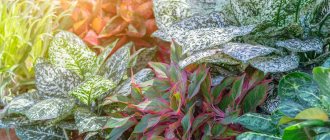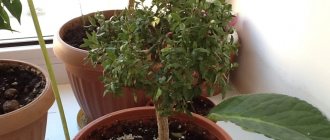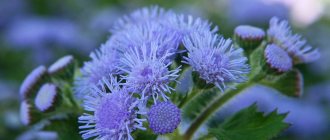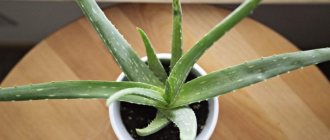Peculiarities
Succulents are plants with succulent leaves and stems; they belong to different families:
- Euphorbiaceae
- Cactaceae
- Liliaceae
- Crassulaceae
- Lastovnevye
- Aizoonaceae
- Kutrovye
- Agave
They are united by the same growth conditions
They prefer dry areas such as deserts. Succulents can also be found in roadside dust. They do not like excess moisture and rainy weather. She ruins them.
For many, it is enough to water twice a year. They make a reserve that is enough for full development. The leaves of the plant are covered with bloom. It performs a protective function from the scorching sun, protecting the leaves from burns.
The plant is native to the deserts of Africa, as well as the American continent. In Europe, for example, caustic sedum is also found in nature.
Sun
This is the first condition for success. If you don't have a south-facing window sill at home, you may not like your succulents.
Succulents love bright light.
and is unable to develop normally without it. In central Russia they need to be placed in direct sun. In summer, they can and should be placed on the balcony with cover from the rain (they don’t need excessive watering at all, these are desert plants). Provide them with desert, and they will reward you with growth and flowering.
Care
Each type of succulent has its own rules for care.
However, there are general rules that must be followed when growing them at home.
Lighting
Lots of light is the most important condition for these plants.
They can easily withstand the scorching sun and thrive on south-facing windows. If it is impossible to meet these conditions, there is no need to breed them at home. Or provide artificial lighting.
There are varieties that can tolerate shade.
The most common of them:
- Schlumberger
- Sansenvieria
- Crassula
For these succulents, the lack of light slows down development. Because of the shade, their health weakens, they are more often attacked by pests and various diseases.
Tolerance to poor lighting is determined by color. Such plants have dark green leaves and trunks.
All species do not like sudden changes in living conditions. After the winter months, they need to be gradually accustomed to light. Otherwise, burns will appear on the leaves in the form of red spots.
Watering
Succulents require minimal watering. They will suffer from excess moisture, even to the point of death. Under natural conditions, a powerful root system is nourished by moisture extracted from the ground; in small pots this possibility is not available.
There is no need to spray the plants. Dry air is healthier for them than humid air.
Watering is stopped on rainy days and in winter. During the winter they can be watered no more than 2 times. The water should be at room temperature. Soft and settled is best.
Fertilizers
You need to fertilize once a month
Fertilizers with a high content of potassium and phosphorus are preferred. But there should be little nitrogen in them; its excess can only do harm. When fertilizing the soil, you need to follow the rule: it is better to underfeed than to overfeed.
Nitrogen makes the plant loose and watery. Many children appear, but they do not develop. The skin of the flower bursts, the wounds begin to rot. All this leads to the death of the succulent.
Temperature
In summer, flowers must be kept at high temperatures.
For the winter, you need to provide them with peace. Favorable conditions are maintained at 8 – 12 degrees.
Warmth stimulates plant growth, and lack of light causes them to stretch out. The result will be their ruined form. If it is not possible to reduce the temperature, then you need to provide them with artificial light. As a last resort, place it on a window, while covering the radiator with a screen.
Soil selection
Succulents require poor, infertile soil. Sand, turf and leaf soil mixed in equal proportions are suitable. Purchased substrates are unsuitable for them because they contain peat. If there is no choice, then be sure to mix sand into it.
Transfer
Small pots and flat bowls are suitable for succulents. It would be better if they were clay. Young plants are replanted every spring, adults once every 2 years.
Decorative mini-flower bed made of succulents
Drainage is laid at the bottom and a little earth is poured. Then the flower is planted and the remaining soil is added. There is no need to fill the container to the brim. You can lay pebbles on top. It will provide additional drainage and protect the root system from rotting.
Transplanted plants are not watered. Damaged roots need to take root. Otherwise, they will begin to rot and the plant itself will become sick.
When transplanting prickly varieties, they are wrapped in paper. This will protect your hands from injury.
How to choose soil?
Seeds should be planted in well-prepared soil. In stores you can find ready-made mixtures, the composition of which is optimal for growing.
However, when preparing the soil, a number of important points should be taken into account.
- Succulents are able to grow even in difficult conditions, so to quickly adapt to the soil of the crop, try to use rough soil. It can be an earth-sand mixture or a mixture of earth and fine gravel. There is an option to add crushed coal to the composition.
- To plant plants, you need to take a ready-made substrate - soil taken, conditionally, from the entrance, of course, will not work. If you purchase soil in a store, you can be sure that it is not only packaged in a bag, but also disinfected.
- If you can’t buy soil in a store, you can buy regular peat filler. Add sand and valuable minerals to it yourself.
Fresh soil, rather than one already used for growing another crop, is a more reliable option for propagating succulents by seeds. In rare cases, it grows well in less than suitable soil. Therefore, buying a bag of soil in a special store is already 50% of the fact that the plant will take root and begin to develop intensively.
Reproduction
Young plants
You can propagate succulents in 4 ways:
Seeds Required conditions:
- Planting material must be fresh. They need to be washed before planting.
- The substrate is sand and peat. Before planting, it must be disinfected by calcining it in the oven.
- The pot must have drainage holes
A drainage layer is placed at the bottom of the pot, and soil is poured on top . Before planting, it must be moistened by placing it in a tray with water. Next, you can sow the seeds.
Maintain the temperature around 22 degrees. Before the emergence of seedlings, sharp jumps should not be allowed. Plant shoots begin to appear after 20 days. You may have to wait longer, depending on the quality of the seeds.
The plant should be replanted no earlier than after 6 months. After diving, young succulents need to be shaded. This will help them quickly adapt to new conditions.
Cuttings To plant a new plant, the cuttings must be healthy and undamaged. After the cut, you need to put it on the window so that the cut can air for 2 - 3 days. Then it is planted in a pot.
Do not place succulent cuttings in water. They will begin to rot in it and will not take root.
The stems and leaves take root in about 14 days. You need to water regularly as the substrate dries out.
Leaf The leaf of the plant should be placed in a pot with loosened soil. Lightly press it into the ground. Next, leave it for two weeks. It will take root on its own and give birth to children.
Types of succulents that can be propagated from leaves. These include:
- Crassula
- Kalanchoe
- Sedum
- Pachyphytum
Vegetatively Some succulents grow babies on their leaves, already with roots, for example, Kalanchoe. All that remains is to collect them and plant them in the soil.
Other types of plants produce babies, for example, haworthia and aloe . They are carefully separated from the mother plant and planted.
Creeping varieties of succulents, such as delosperma, can be propagated by layering. The stem of the plant is dug in, after the roots appear, it is separated and transplanted into a separate pot.
How quickly do succulents grow at home?
The process of growing succulents is quite long and requires a lot of patience. The types of succulents also affect seed germination. For some plant species, a month is enough for the first shoots to appear, while others grow within three or more months.
If the seeds do not hatch through the soil for a long time, there is no need to despair. Every day you need not to be lazy, pay attention to fresh crops, periodically ventilate and water the soil.
Diseases and pests
Dying succulent
Succulents can be attacked by pests such as:
- Thrips
- Chervets
- Ticks
Insecticides rid plants of them. They can be purchased at a flower shop. Spraying the plant should be carried out following the instructions on the package.
Rot is very dangerous for these plants. It occurs due to a number of reasons:
- Poor or no drainage
- Overwatering
- Cold or hot, sudden temperature changes are more dangerous
It is almost impossible to save a plant infected with rot . The only way to remove rotten roots and part of the stem. Plant in new soil. This method does not provide any guarantee for the survival of the flower.
Another problem is mold. It appears on the leaves of the succulent. If it is detected, you need to remove all moldy areas of the succulent. This will stop the spread of the disease. It is recommended to replant and feed the plant.
It is easier to prevent a plant from getting sick than to treat it later.
To do this, you can take a number of preventive measures:
- Do not water frequently; the soil should be allowed to dry.
- Add coal to the soil when transplanting a flower.
- Provide sufficient bright light.
- Use drainage.
- During the dormant period of the succulent, follow the rules of care.
- Replant the plant strictly in the spring.
How to Plant Succulent Seeds
Let's look at the step-by-step process of how to grow succulents from seeds:
- Preparation. To evenly distribute the seeds, you will need to take a thick sheet of paper, bend it in half, and place the seed material there.
- The landing process itself. By tapping with a needle or thin stick, you will need to disperse the planting material over the surface of the substrate.
The seeds are laid out on top to then add a layer of coarse sand. Its layer should be about 2 millimeters. Keep in mind that it is important that the sprinkled layer does not exceed the size of the seed itself. Therefore, small “peas” do not need to be sprinkled at all. - Marking. Be sure to make plastic tags that indicate the type of crop. This allows you to understand the name of the plants in order to provide them with proper care in the future.
- Watering. You will need to water the soil surface from above using filtered water. For this process, a spray bottle is used. This is important so as not to wash away the soil. Next, you need to cover the container with film or a lid. The greenhouse is covered before the seeds begin to germinate until the plants become stronger. Then the covering is gradually reduced.
Throughout this period, it is necessary to ensure that the seeds are in a moist substrate.
Your seeds can take anywhere from a few days to a few weeks or more to germinate. This depends on the type of succulent, temperature and lighting conditions. Some varieties can even germinate up to one year.
Medicinal properties
Succulents have beneficial properties
Some succulents have medicinal properties:
- The most famous is aloe vera; it can cure viral and fungal diseases. It is believed that it fights malignant tumors.
- And its closest relative, aloe vera, is actively used in cosmetics.
- Kalanchoe - relieves pain after burns, treats skin diseases, relieves itching.
- Agave – applied to bruised areas and hematomas, relieves toothache. You need to be careful with it, the plant can cause poisoning, and its juice can burn the skin.
- Prickly pear cactus has a diuretic effect.
- Crassula helps with colds.
- Sansiviera relieves headaches and helps with otitis media. She is being treated for scabies. This succulent is a natural energy booster.
- Sedum heals wounds and hematomas. It is used to remove warts. It removes small external tumors. Stops bleeding.
How to care for succulents grown from seeds
How succulents grow from seeds depends largely on the rules of care.
Particular attention is paid to:
- Temperature. The optimal indicator is considered to be +20…26 degrees. It is important that the mini-greenhouse is not in the open sun. At night, the seeds should rest from the elevated temperature. You should also avoid drafts. Note that Haworthia and Dioscorea germinate at temperatures from +18...20 degrees. They are sown in winter or spring.
- Lighting. You will need good light, but exposure to sunlight can harm young plants. If you want to grow crops year-round, you will need to buy a special lamp for lighting.
- Hydration. Watering is carried out regularly. The soil should not be allowed to dry out, but stagnation of water should also be prevented. It is better to moisten little by little as the soil dries out. The soil should not dry out during the first months. Remember that watering is done more often in summer than in winter. One independent plant will require 3-4 ml of water.
In order for the germination of succulent seeds to be as successful as possible, disease prevention is carried out. Fungicides are used for such purposes. They are bred according to the instructions. In addition, insecticides are often used, but with low concentrations.
As for fertilizers, when choosing nutritious soils, there is no point in adding additional fertilizing for the first 6 months. For completely organic formulations, you will need to apply nutrients for succulents and cacti according to the instructions.
Advice. Remember, each variety of succulent requires its own unique growing conditions from seed. To familiarize yourself with the landing conditions, you can find the information you need on the pages of our website.
The magic of succulents
Succulents have positive magic
In addition to beauty and medicinal properties, people attribute some succulents with magical powers:
- Crassula attracts wealth into the house if placed on the desktop. When standing on a window, it is believed to attract good luck for its owner.
- Zamioculcas is responsible for the money in the house.
- Italians believe that these plants repel lightning. In order to protect the house, they are grown on roofs.
Where to buy quality succulent seeds
This question is quite problematic when you spend a lot of money and time on buying a treasured flower, but as a result you receive seed material of unknown origin and quality. In the era of e-commerce, many amateur flower growers buy seeds from Amazon, Aliexpress and other online sites. Often other plants grow from these seeds or do not germinate at all. Many people believe that most of the seeds on these platforms are fake. There have even been cases where some online stores sold boiled seeds. You can read many reviews on the Internet about the quality of seeds purchased from such online stores.
By purchasing succulent seeds from reputable plant nurseries and collectors, you don't have to worry about their quality.
To be sure of the excellent quality of the purchased seed material and a high chance of seed germination, we recommend contacting well-known collectors, “breeders” of succulents, specialized nurseries and greenhouses.
Decorative compositions
You can create various mixes from succulents. They are very beautiful and will become an exotic addition to the interior.
Types of compositions:
Florarium This is a decorative composition of a mix of plants that are planted in a glass container with a narrowed neck. Its advantage is that optimal microconditions are created inside.
Plant terrarium Features a wide neck. To create it, plants are planted in bowls, cups and other containers.
For compositions, different types of succulents and various decorative items are used. You can give free rein to your imagination when creating. To learn in detail how plants are arranged into mini-gardens, we suggest watching the video:
Succulents, varieties
Succulents are represented by a huge variety of species and varieties, which are difficult to distinguish, much less remember their complex names. Therefore, we will consider the most common varieties.
Household succulents - names:
- Agave is a spherical leaf succulent. The plant is formed from densely arranged leaves with a white border. It is highly decorative.
- Lithops are frequent guests of rockeries. They are also called “living stones” because in appearance they resemble small boulders. They bloom with bright yellow inflorescences reminiscent of chamomile.
- Aeonium arborescens is a large flower-shaped shrub, the rosette of which is formed by leaves of light green or red-violet color.
- Echeveria agave is a delicate plant with small succulent leaves collected in the shape of a green rosette with a waxy coating. It is a flowering succulent that shoots tall shoots of fiery red buds in the summer.
- Crassula is a succulent known as the “money tree”. The plant comes from Africa, is very unpretentious, rarely blooms and is more valued for its round, glossy leaves. When properly formed, it grows up to 1.5 m in the form of a mini-tree.
- Stapelia is the most beautiful succulent. The species has more than a hundred varieties, each of which is distinguished by unusually beautiful flowering. Often used to create decorative compositions both at home and in the garden.
Preparing for transplantation
Before you begin replanting, you need to prepare the necessary items and tools that will be needed during replanting. If you have to work with poisonous plants, it is necessary to protect the skin of your hands so that the poisonous plant sap does not corrode the delicate skin.
Tools for replanting succulents
If necessary, use safety glasses as the corrosive juice may splash into your eyes.
Choosing a pot
When replanting, you will need a new container where the plant will be placed. The pot must be selected based on the type of succulent, its size, and shape. For large tree-like succulents, it is necessary to prepare a deep, wide and heavy pot that can support the weight of the massive plant and not tip over on its side.
What succulents can be used in garden design
Growing an exotic garden on your own site begins with choosing plants. You can choose succulents for decorating your garden area according to their preferences for light, humidity, and temperature. If you're a beginner, start with plants that don't require constant care. Sedum and Sedum are easy to grow and can adapt to bright, sunny locations or even slightly shady areas. The undeniable advantage of such plants is that they do not need fertile soil. Succulents do well in alpine slides and rockeries; they can complement retaining walls. They grow well in cracks and splits of stones, rockeries, sandy and gravel soils. Succulents are also used in patios, terraces and balconies.
Photo of a slide of succulents in the garden
When using such plants in the garden, you should start from an important parameter - location. For example, succulents that do not need a lot of light are perfect for partial shade. These are Aloe, Guernia, Gasteria, Sansevieria, Stapelia, Haworthia.
In sunny areas, brown crops with a waxy coating and slight pubescence will look best. These are Lithops, Sedums, Graptoverias, Opuntias.
When planting such plants, you should leave space between them so that they can grow freely. It is better to fill empty locations with the help of decorative stones, driftwood, and various figures. It is better to combine flower beds whose care is identical. This will simplify cultivation and allow crops to develop better.
In cool climate areas, succulents work best in containers that are moved indoors for the winter. Kalanchoe, Aloe, Echeveria and Aeoniums are excellent choices for them. Enjoy the unique colors, shapes and textures of these plants.
When creating your garden, use interesting mixes of succulent crops. Thanks to the huge variety of plants, you can combine them in shape, leaf texture and color. They are easy to transplant and do not require special care. Imagine, combine and you will be able to get incredible flower beds.











